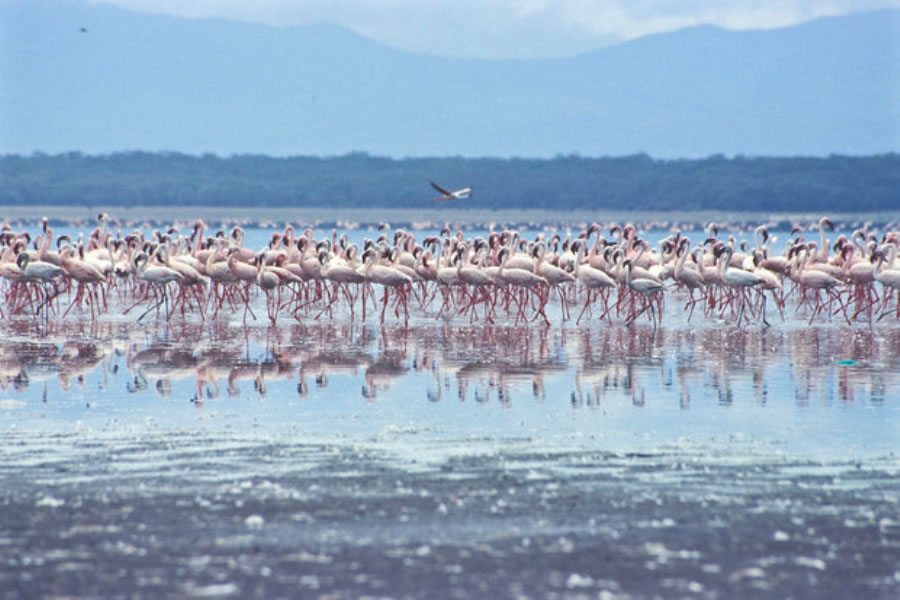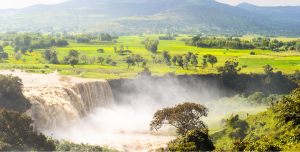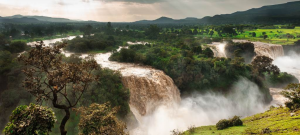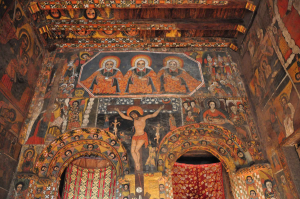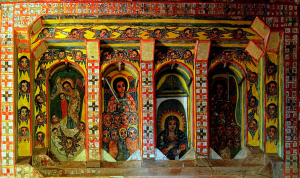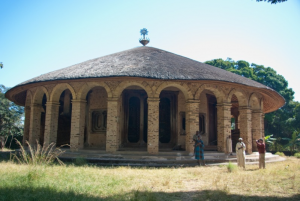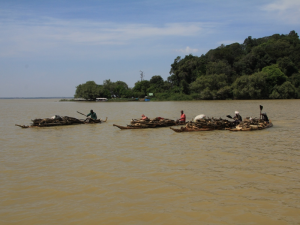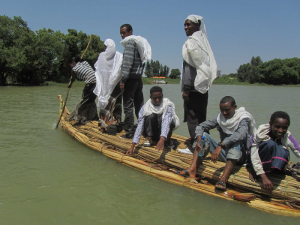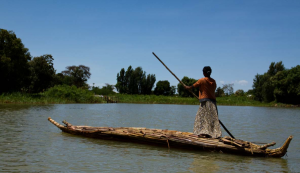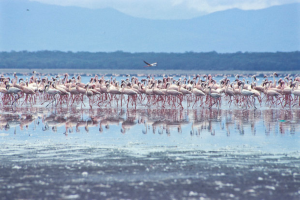The Lake Tana /BAHIR DAR/ and The Blue Nile Falls – the Source of the most famous river in the World. Lake Tana, the largest lake in Ethiopia, situated north of the beautiful town of Bahir Dar is the source from where the famous Blue Nile starts its long journey to Khartoum, and on to the Mediterranean.
The 37 mysterious islands that are scattered about the surface of the lake, give shelter to well hidden churches and monasteries of immense historical and cultural interest; decorated with beautiful paintings and housing innumerable treasures.
Along the lakeshore bird life, both local and migratory visitors, make the site an ideal place for birdwatchers. The whole of the lake Tana region and the Blue Nile gorge host a wide variety of birds both endemic and migratory visitors. The variety of habitats, from rocky crags to riverside forests and important wetlands, ensure that many other different species should be spotted.
Restorative work explains the Gondarene character of some of the paintings found in the remarkable monasteries and churches on the islands of Lake Tana. –Kebran Gabriel, for example, originally established in the fourteenth century, was later renovated and rebuilt during the reign of Emperor Iyasu I (1682-1706). Narga Selassie, built in the eighteenth century by Empress Mentewab, is also Gondarene in character. Other churches are influenced by different periods. For instance, although Ura Kidane Mehret on the Zegie Peninsula is a fourteenth-century building, its most powerful murals notably around the holy of holies – were painted in Gondarene times.
On the other hand, the centerpiece of Daga Istafanos is a Madonna painted during the reign of Emperor Zara Yaqob (1434-68). Although medieval by date, this work has the flowing lines, realism, beauty and tension of much later styles.–The thirty-seven islands of Lake Tana shelter twenty monasteries – surviving remnants of an old, contemplative tradition. Because of their isolation they were used to store art treasures and religious relics from all parts of the country. Tradition says the Ark of the Covenant was kept on one of these islands when Axum was endangered, and the remains of five Emperors – including Fasilidas – are to be found at Daga Istafanos. Monks at Ura Kidane Mehret say that more than forty tabots from churches destroyed by Ahmed Gragn were hidden in their monastery during the sixteenth century.–The thirty-seven islands of Lake Tana shelter twenty monasteries – surviving remnants of an old, contemplative tradition. Because of their isolation they were used to store art treasures and religious relics from all parts of the country. Tradition says the Ark of the Covenant was kept on one of these islands when Axum was endangered, and the remains of five Emperors – including Fasilidas – are to be found at Daga Istafanos. Monks at Ura Kidane Mehret say that more than forty tabots from churches destroyed by Ahmed Gragn were hidden in their monastery during the sixteenth century.
The Blue Nile river flows out of the lake with tremendous force and volume over the basalt shoulder of a giant cataract and onwards from there, ever downwards through dark and angry defiles, towards the deserts of the Sudan, on its way to enrich Egypt’s fertile delta.
The power of the Blue Nile may best be appreciated just thirty kilometers downstream from the point where the river first leaves Lake Tana. There, a rumble of sound fills the air and the green fields and low hills on either bank tremble to the Blue Nile Falls. It is one of the most dramatic spectacles on either the White or Blue Niles, a vision of natural strength and grandeur.
Four hundred meters wide in flood, the Blue Nile plunges forty-five meters down a sheer chasm to throw up a continuous mist that drenches the countryside up to a kilometer away. In turn, this gentle deluge produces rainbows that shimmer across the gorge under the changing arc of the sun – and a perennial rainforest. The pillar of cloud in the sky above, seen from afar, explains the local name for the falls – water that smokes, Tissisat.
The approach to the falls leads through Tissisat village where travelers find themselves surrounded by a retinue of youthful guides and musicians. For a small fee, they will point out many places of historic interest.

